Home>Garden Essentials>What Herbs To Grow In A Vertical Garden
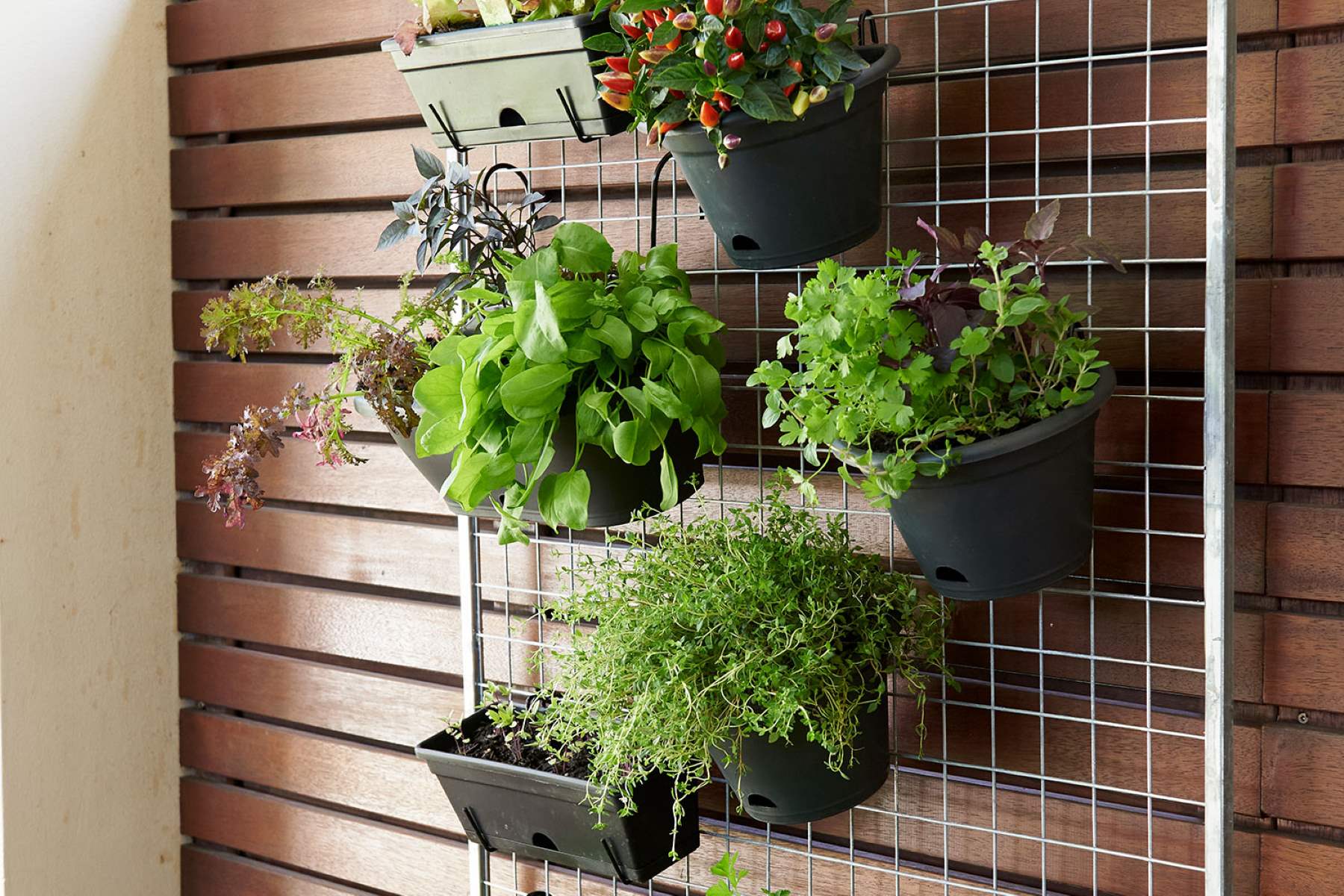

Garden Essentials
What Herbs To Grow In A Vertical Garden
Modified: May 6, 2024
Discover the best herbs to grow in a vertical garden and elevate your garden game. From basil to mint, create a vibrant and space-saving garden with our expert tips.
(Many of the links in this article redirect to a specific reviewed product. Your purchase of these products through affiliate links helps to generate commission for Storables.com, at no extra cost. Learn more)
Introduction
Gardening has always been a favorite pastime for nature enthusiasts, but not everyone has the luxury of a sprawling backyard to cultivate a traditional garden. However, with the rise of vertical gardening, anyone can enjoy the beauty and benefits of growing plants, even in limited spaces. Vertical gardens utilize vertical space, such as walls or fences, to maximize the use of available area, making it an ideal solution for urban dwellers, apartment owners, or anyone with a small outdoor space.
Vertical gardens not only provide a visually appealing green haven, but they also offer a host of benefits. One of the key advantages is the ability to grow a wide variety of herbs. Herbs are versatile plants that not only add flavor and aroma to culinary dishes but also boast numerous health benefits. Whether you’re a seasoned gardener or a novice just starting out, growing herbs in a vertical garden is a fantastic way to enhance your gardening skills and enjoy the fresh flavors of homegrown produce.
In this article, we will explore some of the best herbs to grow in a vertical garden, along with tips on how to care for them and maximize their growth potential. So, whether you’re an avid cook looking to elevate your dishes or a nature lover seeking to bring greenery into your space, read on to discover the perfect herbs for your vertical garden.
Key Takeaways:
- Elevate your gardening experience with a vertical garden, maximizing space and flavor. Choose the right herbs, care for them properly, and enjoy fresh, aromatic flavors in your culinary creations.
- Embrace the beauty and practicality of vertical gardening, growing herbs like basil, mint, and thyme. Create a flourishing oasis, adding freshness and flavor to your meals.
Benefits of Vertical Gardening
Vertical gardening offers a multitude of advantages that make it an appealing option for both experienced gardeners and beginners. Let’s dive into some of the key benefits:
- Optimal Use of Space: One of the primary benefits of vertical gardening is its ability to maximize space. By utilizing vertical surfaces such as walls, fences, or trellises, you can effectively grow plants without taking up valuable floor space. This is especially useful for those with limited outdoor areas or apartment balconies.
- Increased Yield: Vertical gardens often have a higher yield compared to traditional gardens due to their ability to grow plants in multiple layers. With proper planning and organization, you can grow a diverse range of herbs, vegetables, and even flowers, all within a relatively small area.
- Improved Aesthetic Appeal: Vertical gardens can transform bare walls into stunning displays of greenery. They serve as natural decor, adding beauty and freshness to any space. Whether it’s a vibrant array of colorful flowers or a cascading collection of herbs, a vertical garden can be a visually striking addition to your home or outdoor area.
- Easier Maintenance: Traditional gardens can be time-consuming and physically demanding to maintain. Vertical gardens, on the other hand, often require less bending, kneeling, and weeding. The raised structure of a vertical garden makes it more accessible, minimizing strain on your back and knees. Additionally, vertical gardens can be easier to water and fertilize, as the plants are within easy reach.
- Pest Control: Vertical gardens can offer better protection against pests and diseases. Elevated planters and trellises can help to keep plants off the ground, reducing the risk of soil-borne pests and fungal diseases. Furthermore, certain plants, like marigolds or lavender, can act as natural pest repellents, enhancing the overall health of your garden.
- Improved Air Quality: Plants are known for their ability to absorb carbon dioxide and release oxygen, improving air quality. Vertical gardens, with their abundance of lush foliage, can help purify the surrounding air, creating a healthier and more refreshing environment.
- Accessibility and Convenience: Vertical gardens bring the joy of gardening closer to you. With plants at eye level, tending to them becomes more convenient and enjoyable. Harvesting fresh herbs or vegetables for your meals becomes a hassle-free task, just steps away from your kitchen.
As you can see, the benefits of vertical gardening are numerous and diverse. Whether you’re looking to maximize space, enhance the visual appeal of your surroundings, or simply enjoy the convenience of fresh herbs and produce, a vertical garden is an excellent option.
Choosing the Right Herbs for a Vertical Garden
When it comes to selecting herbs for your vertical garden, there are a few factors you should consider. Paying attention to the growing conditions, care requirements, and culinary uses of different herbs will help you make the best choices for your vertical garden. Here are some popular herbs that thrive in vertical gardens:
- Basil: Basil is a versatile herb known for its distinctive aroma and flavor. It thrives in warm weather and requires ample sunlight, making it a perfect choice for a vertical garden. Basil can be grown from seed or seedlings, and its bushy growth makes it an attractive addition to any garden. Use it in a variety of dishes, from pasta and salads to soups and sauces.
- Mint: Mint is a refreshing herb that grows well in both sun and shade. It is a vigorous grower and can quickly take over a garden if not contained. Vertical gardening can help keep mint in check, as you can control its growth by confining it to a specific area. Mint leaves are commonly used in beverages like mojitos or infused in dishes such as salads and desserts.
- Thyme: Thyme is a low-growing herb that loves the sun and well-drained soil. It has a delightful fragrance and is a staple in Mediterranean cuisine. Thyme can be grown from seeds or cuttings and is a great herb for vertical gardens due to its compact and spreading growth habit. Use it to add depth of flavor to roasted vegetables, meats, and stews.
- Rosemary: Rosemary is an aromatic herb that thrives in sunny and dry conditions. It is a woody perennial that adds an earthy flavor to various dishes. Rosemary can be grown from cuttings or purchased as seedlings. Its upright growth makes it an excellent candidate for vertical gardens. Use it to season roasted potatoes, grilled meats, or infuse oils and vinegars.
- Parsley: Parsley is a biennial herb that prefers partial shade and rich, well-drained soil. It is a versatile herb that adds freshness and garnishability to numerous dishes. Parsley can be grown from seeds or transplants and is a wonderful addition to a vertical garden due to its clumping growth habit. Use it in salads, soups, marinades, and as a decorative element for plating.
- Chives: Chives are a member of the onion family and thrive in full sun. They are easy to grow and have a mild onion flavor that complements a wide range of dishes. Chives can be grown from seeds or transplants, and their tall and thin growth make them a perfect fit for vertical gardens. Use them in salads, soups, dips, and as a garnish for baked potatoes.
- Cilantro: Cilantro, also known as coriander, is a cool-weather herb that needs partial shade and well-drained soil. It is widely used in Mexican, Indian, and Asian cuisines, adding a fresh and citrusy note to dishes. Cilantro can be grown from seeds or transplants and is a great option for vertical gardens due to its compact growth. Harvest both the leaves and seeds for different culinary applications.
- Oregano: Oregano is a flavorful herb that prefers full sun and well-drained soil. It is a hardy perennial that is commonly used in Italian and Mediterranean cooking. Oregano can be grown from seeds or cuttings and is well-suited for vertical gardens due to its spreading growth habit. Use it in pizzas, pasta sauces, salads, and marinades.
Remember to take into consideration your specific growing conditions, such as sunlight exposure and the climate of your region, when selecting herbs for your vertical garden. By choosing herbs that suit your garden’s conditions and culinary preferences, you’ll be on your way to enjoying a bountiful harvest of fresh herbs right at your fingertips.
Basil
Basil is a popular herb that is well-suited for vertical gardens. Its vibrant green leaves and aromatic fragrance make it a delightful addition to any garden. Let’s explore the growing conditions, care tips, and culinary uses of basil:
Growing Conditions:
Basil thrives in warm weather and requires at least six to eight hours of sunlight each day. It prefers well-drained soil that is rich in organic matter. If you live in a region with cool summers, consider growing basil in containers that can be moved indoors during colder months.
When growing basil in a vertical garden, choose a sunny location on your wall or fence that receives ample sunlight. Ensure that the vertical structure allows for proper airflow and drainage to prevent the accumulation of moisture around the basil plants.
Care Tips:
Here are some care tips to help your basil plants thrive:
– Watering: Basil plants need consistent moisture but should not be over-watered. Water them deeply whenever the top inch of soil feels dry. Avoid wetting the leaves, as this can lead to fungal diseases. Water in the morning to allow the plants to dry out during the day.
– Fertilizing: Basil is a relatively heavy feeder. Apply a balanced organic fertilizer every four to six weeks, following the recommended application rate on the packaging. Avoid over-fertilizing, as it can result in excessive leaf growth with diminished flavor.
– Pruning: Regular pruning is essential to encourage bushier growth and prevent the plant from going to seed too quickly. Pinch off the top two sets of leaves when the plant has grown 6-8 inches tall. Regular harvesting will also promote continuous growth.
– Pest Control: Keep an eye out for common basil pests, such as aphids, slugs, and snails. If any infestations occur, gently remove the pests by hand or use organic pest control methods. Ensuring good air circulation around the plants can also help prevent disease and pest issues.
Culinary Uses:
Basil is a versatile herb that adds a fresh and aromatic flavor to a wide range of dishes. Here are some culinary uses for basil:
– Pesto: Basil is the star ingredient in the classic Italian sauce, pesto. Combine fresh basil leaves, garlic, pine nuts, Parmesan cheese, and olive oil in a food processor for a delicious homemade pesto.
– Capers: Use the tender basil leaves as a substitute for capers in recipes. Rinse the leaves and mix them with salt, vinegar, and spices for a tangy condiment.
– Salads: Tear fresh basil leaves into salads for a burst of flavor and color. Basil pairs well with tomatoes, mozzarella, and balsamic vinaigrette.
– Pasta and Pizza: Sprinkle chopped basil leaves over freshly cooked pasta or use them as a topping for pizzas to impart a fresh and herbaceous taste.
– Infused Oils: Steep fresh basil leaves in olive oil to create aromatic basil-infused oil. Drizzle it over bruschetta, grilled vegetables, or use it as a dipping oil for artisan bread.
By providing the right growing conditions, implementing proper care techniques, and utilizing basil in various culinary applications, you can enjoy the flavors and aromas of this wonderful herb from your own vertical garden.
Mint
Mint is a refreshing herb that is well-known for its aromatic leaves and invigorating scent. It is a versatile herb that can thrive in vertical gardens. Let’s explore the growing conditions, care tips, and culinary uses of mint:
Growing Conditions:
Mint grows well in both sun and partial shade, making it a versatile herb for vertical gardens. It prefers moist soil with good drainage. Mint is a vigorous grower and can quickly spread, so it’s a good idea to grow it in containers or planters within your vertical garden to prevent it from taking over the space.
When selecting a location for your mint plants in the vertical garden, choose an area that receives at least four to six hours of sunlight per day. Ensure that there is adequate airflow around the plants to prevent humidity buildup, which can lead to fungal diseases.
Care Tips:
Here are some care tips to help your mint plants thrive:
– Watering: Mint plants require consistent moisture but should not be over-watered. Water them whenever the top inch of soil feels dry. Avoid wetting the leaves excessively, as this can lead to fungal diseases. Monitor the moisture levels regularly, especially during hot and dry periods.
– Fertilizing: Mint plants don’t require heavy feeding. Apply a balanced organic fertilizer in the spring and again in midsummer, following the recommended application rate on the packaging. Avoid over-fertilizing, as it can lead to excessive leaf growth with diminished flavor.
– Pruning: Regular pruning is essential to keep mint plants in check and encourage bushier growth. Pinch off the stem tips regularly to prevent the plants from flowering and going to seed too quickly. Pruning also helps to maintain the plant’s shape and prevents it from becoming leggy.
– Pest Control: Monitor your mint plants for common pests such as aphids and spider mites. If any infestations occur, gently remove the pests by hand or use organic pest control methods. Regularly inspect the leaves for signs of damage or any signs of disease.
Culinary Uses:
Mint is a versatile herb with a refreshing flavor that pairs well with both sweet and savory dishes. Here are some culinary uses for mint:
– Beverages: Mint is popularly used in various beverages like mojitos, mint juleps, or infused water. Add fresh mint leaves to your favorite cocktails or steep them in hot water to make a soothing mint tea.
– Salads and Salsas: Chopped mint leaves add a burst of freshness to salads, fruit salsas, and tzatziki sauce. It pairs well with ingredients like cucumber, watermelon, feta cheese, and yogurt.
– Desserts: Mint is a classic flavor in desserts. Use it to make mint chocolate chip ice cream, mint-favored chocolates, or add it as a garnish to sweet treats like brownies or cakes.
– Marinades: Make a flavorful marinade for meats and vegetables by combining mint with other herbs, garlic, lemon juice, and olive oil. This adds a refreshing twist to your grilled dishes.
– Culinary Garnish: Mint leaves can be used as a decorative garnish for desserts, soups, or cocktails. Their vibrant color and pleasant aroma make any dish visually appealing.
By providing the right growing conditions, following proper care techniques, and incorporating mint into a variety of culinary applications, you can enjoy the invigorating flavor and aroma of this delightful herb from your very own vertical garden.
Thyme
Thyme is a versatile herb with a delightful fragrance and a wide array of culinary uses. It can thrive in vertical gardens, adding both flavor and beauty to your space. Let’s explore the growing conditions, care tips, and culinary uses of thyme:
Growing Conditions:
Thyme is a low-growing herb that prefers full sun and well-drained soil. It is a hardy plant that can tolerate various soil types, but it thrives in soil with good drainage. Thyme is also drought-tolerant, making it perfect for vertical gardens where water retention may be a challenge.
When choosing a location for your thyme plants in the vertical garden, opt for a spot that receives at least six hours of sunlight per day. Ensure that the vertical structure allows for adequate airflow around the plants to prevent moisture buildup, which can lead to fungal diseases.
Care Tips:
Here are some care tips to help your thyme plants flourish:
– Watering: Thyme is a drought-tolerant herb and doesn’t require frequent watering once established. Water deeply but infrequently, allowing the soil to dry out between watering sessions. Avoid over-watering, as it can lead to root rot.
– Fertilizing: Thyme generally doesn’t require heavy feeding. A light application of a balanced organic fertilizer in the spring should be sufficient. Follow the recommended application rate on the packaging to avoid overfeeding the plants.
– Pruning: Regular pruning helps to maintain the shape of thyme plants and encourages bushier growth. Prune after the plant has finished blooming or before new growth appears. Trim back about one-third of the plant’s height, focusing on removing woody stems and spent flowers.
– Pest Control: Thyme is generally resistant to pests and diseases. However, keep an eye out for common garden pests like aphids and spider mites. If any infestations occur, manually remove the pests or use organic pest control methods.
Culinary Uses:
Thyme is widely used in Mediterranean and French cuisines due to its earthy flavor and aroma. Here are some culinary uses for thyme:
– Meat Seasoning: Thyme pairs well with savory meat dishes and is often used in spice rubs or marinades for poultry, lamb, beef, or pork. It adds depth of flavor to roasted meats and stews.
– Roasted Vegetables: Toss fresh thyme leaves with olive oil, salt, and pepper, and then sprinkle them over roasted potatoes, carrots, or other vegetables. The herbaceous flavor of thyme complements the roasted flavors perfectly.
– Soups and Stews: Add a few sprigs of thyme to soups, stocks, and stews for added flavor. The leaves can be left on the stem and removed before serving or tied together with kitchen twine for easy removal.
– Breads and Butters: Infuse thyme leaves into butter or olive oil for a savory spread or dip. Fresh thyme leaves can also be incorporated into bread dough or biscuit batter for a fragrant twist.
– Infused Vinegars: Steep sprigs of thyme in white wine vinegar or apple cider vinegar to create a flavorful herb-infused vinegar. Use it in dressings, marinades, or sauces to add a subtle thyme undertone.
By providing the right growing conditions, implementing proper care techniques, and utilizing thyme in various culinary applications, you can enjoy the delightful flavor and aroma of this versatile herb from your own vertical garden.
Rosemary
Rosemary is a fragrant and versatile herb that is well-suited for vertical gardens. Its needle-like leaves and woody stems make it a visually appealing addition to any garden. Let’s explore the growing conditions, care tips, and culinary uses of rosemary:
Growing Conditions:
Rosemary thrives in full sun and well-drained soil. It prefers a slightly alkaline soil with a pH range of 6 to 7.5. When growing rosemary in a vertical garden, choose a location that receives at least six hours of direct sunlight each day. Ensure that the vertical structure allows for good air circulation around the plants to prevent moisture buildup and any potential issues with fungal diseases.
Care Tips:
Here are some care tips to help your rosemary plants flourish:
– Watering: Rosemary is a drought-tolerant herb that prefers to dry out between waterings. Water deeply but infrequently, allowing the soil to dry out partially before giving it a thorough watering. Avoid over-watering, as rosemary is susceptible to root rot in waterlogged soil.
– Fertilizing: Rosemary is not a heavy feeder and generally does well without regular fertilization. However, if your soil is lacking in nutrients, you can apply a balanced organic fertilizer sparingly in the spring. Follow the recommended application rate on the packaging to avoid over-fertilizing.
– Pruning: Pruning rosemary helps to maintain its shape and prevent it from becoming leggy. Regularly trim back the branches, taking care not to remove more than one-third of the plant at a time. Prune after flowering or in early spring to encourage healthy growth.
– Pest Control: Rosemary is relatively resistant to pests and diseases. However, keep an eye out for common garden pests like aphids and spider mites. If any infestations occur, manually remove the pests or use organic pest control methods.
Culinary Uses:
Rosemary is a flavorful herb with versatile culinary uses. Here are some ways to incorporate rosemary into your cooking:
– Roasts and Grilled Meats: Rosemary pairs well with roasted or grilled meats like chicken, lamb, or beef. Use sprigs of rosemary to season the meat or add finely chopped rosemary leaves to marinades or spice rubs for a fragrant twist.
– Vegetable Dishes: Toss roasted vegetables like potatoes, carrots, or zucchini with olive oil and chopped rosemary for added flavor. The earthy aroma of rosemary complements a wide variety of vegetables.
– Breads and Focaccia: Add chopped rosemary leaves to bread dough or sprinkle them on top of focaccia for a savory and aromatic flavor. Rosemary-infused olive oil can also be used to dip bread or drizzle over freshly baked goods.
– Soups and Sauces: Use sprigs of rosemary to infuse flavor into soups, stews, and sauces. Simply add the whole sprigs during cooking and remove them before serving.
– Herb Butter: Blend finely minced rosemary leaves with softened butter to create a flavorful herb butter. This can be used to enhance the taste of steaks, seafood, or spread it onto crusty bread.
By providing the right growing conditions, implementing proper care techniques, and incorporating rosemary into various culinary applications, you can enjoy the aromatic and flavorful benefits of this versatile herb from your own vertical garden.
Parsley
Parsley is a versatile and widely used herb that can thrive in vertical gardens. With its vibrant green foliage and fresh flavor, parsley is a great addition to any gardening space. Let’s explore the growing conditions, care tips, and culinary uses of parsley:
Growing Conditions:
Parsley prefers partial shade to full sun and well-drained soil. It is tolerant of different soil types, but prefers nutrient-rich, moist soil. When growing parsley in a vertical garden, choose a location that receives at least four to six hours of sunlight each day. Provide some shade during the hottest parts of the day to help prevent the leaves from becoming bitter.
Care Tips:
Here are some care tips to help your parsley plants thrive:
– Watering: Keep the soil consistently moist, but avoid over-watering, as parsley does not tolerate waterlogged soil. Water deeply when the top inch of soil feels dry. Mulching around the plants can help retain moisture and suppress weed growth.
– Fertilizing: Parsley benefits from regular fertilization to promote healthy growth. Apply a balanced fertilizer every four to six weeks during the growing season, following the recommended application rate on the packaging. Avoid excessive nitrogen fertilizers, as they can result in more foliage and less flavor.
– Pruning: Harvest parsley leaves regularly to encourage new growth and prevent the plant from going to seed too quickly. Pinch or cut off the outer leaves from the base of the plant, leaving the central leaves to continue growing. Trim any flowers that appear to prolong the plant’s lifespan.
– Pest Control: Keep an eye out for common pests like aphids or caterpillars that may be attracted to parsley. If necessary, use organic pest control methods or manually remove the pests by hand. Regularly inspect the leaves for any signs of damage or disease.
Culinary Uses:
Parsley is a versatile herb with a fresh taste that enhances a wide variety of dishes. Here are some culinary uses for parsley:
– Garnish: Sprinkle chopped parsley leaves over finished dishes for a pop of color and fresh flavor. It adds a bright, herbal note to soups, salads, and pasta dishes.
– Sauces and Dressings: Use chopped parsley leaves in homemade sauces and dressings. It pairs well with lemon or garlic flavors and adds vibrancy to sauces like chimichurri or salsa verde.
– Herb Butter: Combine softened butter, minced parsley, and other herbs for a delectable herb butter. Spread it on bread, melt it over grilled meats, or use it to finish roasted vegetables.
– Tabbouleh: Tabbouleh is a popular Middle Eastern salad that features parsley as the primary ingredient. Combine chopped parsley with bulgur wheat, tomatoes, cucumbers, lemon juice, and olive oil for a refreshing and nutritious salad.
– Seasoning: Add parsley to flavor meatballs, stuffing, or meatloaf mixtures. You can also sprinkle it over roasted or grilled meats, seafood, or vegetables for an extra burst of freshness.
By providing the right growing conditions, implementing proper care techniques, and incorporating parsley into a variety of culinary applications, you can enjoy the vibrant flavor and versatility of this wonderful herb from your own vertical garden.
Chives
Chives are a versatile and flavorful herb that can thrive in vertical gardens, adding a punch of onion-like taste to your dishes. With their slender green leaves and delicate purple flowers, chives also add visual appeal to your garden. Let’s explore the growing conditions, care tips, and culinary uses of chives:
Growing Conditions:
Chives prefer full sun but can tolerate partial shade. They thrive in well-drained soil that is enriched with organic matter. When growing chives in a vertical garden, choose a location that receives at least six hours of sunlight each day. Ensure that the vertical structure allows for good air circulation around the plants to prevent moisture buildup and potential fungal diseases.
Care Tips:
Here are some care tips to help your chives thrive:
– Watering: Keep the soil consistently moist, but avoid over-watering, as it can lead to root rot. Water the plants deeply whenever the top inch of soil feels dry. Mulching around the base of the plants can help retain moisture and suppress weed growth.
– Fertilizing: Chives benefit from occasional feeding to promote healthy growth. Apply a balanced organic fertilizer once or twice during the growing season, following the recommended application rate on the packaging. A light application of compost or well-rotted manure can also provide the necessary nutrients.
– Pruning: Regularly harvest the leaves by cutting them at the base to encourage new growth. Avoid cutting more than one-third of the plant at a time to ensure its continued vitality. Removing any yellowed or wilted leaves helps to maintain the plant’s appearance.
– Pest Control: Chives are relatively resistant to pests and diseases. However, keep an eye out for common garden pests like aphids. If any infestations occur, manually remove the pests or use organic pest control methods. Regularly inspect the leaves for signs of damage or disease.
Culinary Uses:
Chives offer a delicate and mild onion flavor that complements various dishes. Here are some culinary uses for chives:
– Salads and Soups: Sprinkle chopped chives over green salads or use them as a garnish for creamy soups. Their subtle onion flavor adds a fresh and aromatic element to these dishes.
– Egg Dishes: Add chopped chives to scrambled eggs, omelets, or quiches for an extra burst of flavor and color. The combination of chives and eggs is a classic pairing.
– Potatoes: Use chopped chives as a topping for baked potatoes, mashed potatoes, or potato salads. The mild onion taste of chives enhances the overall flavor and provides a pop of color.
– Dips and Sauces: Mix chives into sour cream or yogurt-based dips for a delightful onion flavor. It works well in dressings, mayonnaise, and marinades too.
– Herb Butter: Combine softened butter, minced chives, and other herbs to create a savory herb butter. Spread it on bread, melt it over grilled meats, or use it to flavor steamed vegetables.
By providing the right growing conditions, implementing proper care techniques, and incorporating chives into various culinary applications, you can enjoy the mild onion taste and decorative charm of this versatile herb from your own vertical garden.
Cilantro
Cilantro, also known as coriander, is a popular herb with a fresh and citrusy flavor that can thrive in vertical gardens. Known for its distinctive aroma and vibrant green leaves, cilantro adds a burst of flavor to a wide range of dishes. Let’s explore the growing conditions, care tips, and culinary uses of cilantro:
Growing Conditions:
Cilantro thrives in cool weather and prefers partial shade to full sun. It grows best in well-drained soil that is rich in organic matter. When growing cilantro in a vertical garden, choose a location that receives morning sun and afternoon shade, or filtered sunlight throughout the day. This will help prevent the plants from bolting and prolong their growth.
Care Tips:
Here are some care tips to help your cilantro plants flourish:
– Watering: Keep the soil consistently moist, especially during hot and dry periods. Water deeply whenever the top inch of soil feels dry. Mulching around the plants can help retain moisture and regulate soil temperature.
– Fertilizing: Cilantro is not a heavy feeder, but still benefits from occasional feeding. Apply a balanced organic fertilizer once or twice during the growing season, following the recommended application rate on the packaging. Avoid excessive nitrogen fertilizers, as they can result in more foliage with diminished flavor.
– Successive Planting: To ensure a continuous supply of fresh cilantro, consider successive planting every few weeks. This involves sowing a new batch of seeds a few weeks after the previous batch has germinated. This way, you’ll have a steady harvest of cilantro throughout the growing season.
– Pruning: Regularly harvest the outer leaves and stems of the cilantro plants to encourage new growth. This helps to prevent the plants from bolting and going to seed prematurely. Pinch or cut the leaves and stems near the base of the plant, leaving the inner growth to continue.
– Pest Control: Keep an eye out for common pests such as aphids or spider mites. If any infestations occur, manually remove the pests or use organic pest control methods. Regularly inspect the leaves for signs of damage or disease.
Culinary Uses:
Cilantro is widely used in various cuisines, particularly in Mexican, Indian, and Asian dishes. Here are some culinary uses for cilantro:
– Salsas and Guacamole: Add chopped cilantro leaves to fresh salsas and guacamole for a burst of citrusy flavor and vibrant green color.
– Curry Pastes and Sauces: Blend cilantro leaves with other herbs, spices, and aromatics to create flavorful curry pastes or sauces for Indian and Thai cuisines.
– Salads: Toss fresh cilantro leaves into salads to add brightness and zing. It pairs well with ingredients like tomatoes, cucumber, and avocado.
– Tacos and Burritos: Sprinkle chopped cilantro leaves over tacos, burritos, or quesadillas for an added layer of freshness. The citrusy notes of cilantro complement the savory flavors.
– Soups and Stews: Add chopped cilantro to soups, stews, or chilis toward the end of cooking to infuse a bright and herbaceous flavor into the dish.
– Marinades and Dressings: Blend cilantro with garlic, lime juice, and oils to create flavorful marinades for meats or dressings for salads.
By providing the right growing conditions, implementing proper care techniques, and incorporating cilantro into a variety of culinary applications, you can enjoy the zesty and aromatic flavors of this versatile herb from your own vertical garden.
Oregano
Oregano is a flavorful and aromatic herb that can thrive in vertical gardens, bringing a taste of the Mediterranean to your dishes. With its small leaves and woody stems, oregano adds a touch of herbal complexity to various culinary creations. Let’s explore the growing conditions, care tips, and culinary uses of oregano:
Growing Conditions:
Oregano thrives in full sun and well-drained soil. It prefers slightly alkaline soil with a pH range between 6 and 8. When growing oregano in a vertical garden, choose a location that receives at least six hours of direct sunlight each day. The vertical structure should allow for good air circulation to prevent moisture buildup and potential fungal diseases.
Care Tips:
Here are some care tips to help your oregano plants flourish:
– Watering: Oregano is a drought-tolerant herb that prefers to dry out between waterings. Water the plants thoroughly whenever the soil feels dry to the touch. Be careful not to over-water, as oregano is susceptible to root rot in waterlogged conditions.
– Fertilizing: Oregano is a relatively low-maintenance herb and doesn’t require heavy fertilization. If desired, you can apply a balanced organic fertilizer once or twice during the growing season. Follow the recommended application rate on the packaging to avoid over-fertilization.
– Pruning: Regular pruning helps to promote bushier growth and prevent the plant from becoming leggy. Prune oregano plants by cutting back the stems, leaving a few inches above the base. This encourages new growth and maintains the plant’s shape.
– Pest Control: Oregano is generally resistant to pests and diseases. However, keep an eye out for common garden pests like aphids or spider mites. If any infestations occur, manually remove the pests or use organic pest control methods. Inspect the leaves regularly for signs of damage or disease.
Culinary Uses:
Oregano is a staple herb in Mediterranean and Italian cuisines, known for its warm and robust flavor. Here are some culinary uses for oregano:
– Pizza and Pasta: Sprinkle dried or fresh oregano leaves over pizza or pasta dishes to add an aromatic and savory element. Oregano pairs particularly well with tomatoes, cheese, and olive oil.
– Marinades and Rubs: Add oregano to marinades or spice rubs for chicken, beef, or lamb. Its bold flavor and aroma infuse the meat with Mediterranean flair.
– Salad Dressings: Blend oregano leaves with olive oil, vinegar, garlic, and other herbs to create a delightful salad dressing. It works especially well with Greek-style salads.
– Soups and Stews: Add dried or fresh oregano leaves to soups, stews, and chili for a warm and herbaceous taste. Oregano complements a wide variety of vegetables and meats in these dishes.
– Herb-infused Oil: Create herb-infused oil by steeping oregano leaves in olive oil. Use it as a dipping oil, drizzle it over roasted vegetables, or incorporate it into homemade vinaigrettes.
By providing the right growing conditions, implementing proper care techniques, and incorporating oregano into diverse culinary applications, you can enjoy the rich and aromatic flavors of this versatile herb from your own vertical garden.
Conclusion
Growing herbs in a vertical garden is a fantastic way to maximize limited space and elevate your gardening experience. The benefits of vertical gardening, such as optimal space utilization, increased yield, and improved aesthetic appeal, make it an excellent option for both seasoned gardeners and beginners alike. By choosing the right herbs based on their growing conditions, caring for them properly, and exploring their culinary uses, you can create a thriving vertical garden that not only adds beauty to your space but also enhances your meals with the flavors and aromas of fresh herbs.
Throughout this article, we’ve explored the growing conditions and care tips for eight popular herbs that thrive in vertical gardens: basil, mint, thyme, rosemary, parsley, chives, cilantro, and oregano. Each herb brings its unique characteristics and versatile flavor profiles to the table.
Whether you’re seasoning your dishes with the aromatic basil leaves, adding a refreshing kick with mint, infusing your recipes with the earthy flavors of thyme and rosemary, enhancing the freshness of your dishes with parsley and chives, adding a citrusy note with cilantro, or embracing the warm and robust taste of oregano, these herbs are sure to elevate your culinary creations.
Remember to provide the appropriate growing conditions for each herb, including proper sunlight exposure and well-drained soil. Implement the care guidelines, such as watering and pruning, to ensure healthy growth and robust flavors. And don’t forget to explore the various culinary uses of these herbs, from enhancing salads and soups to seasoning meats and infusing oils.
So, whether you’re an urban gardener with limited outdoor space or someone looking to explore the world of herbs in a new way, a vertical garden can offer both practicality and pleasure. Embrace the beauty and benefits of vertical gardening, and watch your herb garden thrive, both visually and gastronomically.
With the right herbs, a touch of creativity, and a green thumb, your vertical garden will become a flourishing oasis, providing you with an abundance of fresh and flavorful herbs right at your fingertips.
Now that you've mastered which herbs thrive in vertical gardens, why not step up your gardening game by crafting your own setup? Dive into our guide on how to make a DIY vertical garden, perfect for bringing that fresh herb magic right to your doorstep. This guide provides easy-to-follow steps, ensuring you can create a beautiful and functional garden space, even with limited room. Get ready to transform any small area into a lush, aromatic haven.
Frequently Asked Questions about What Herbs To Grow In A Vertical Garden
Was this page helpful?
At Storables.com, we guarantee accurate and reliable information. Our content, validated by Expert Board Contributors, is crafted following stringent Editorial Policies. We're committed to providing you with well-researched, expert-backed insights for all your informational needs.
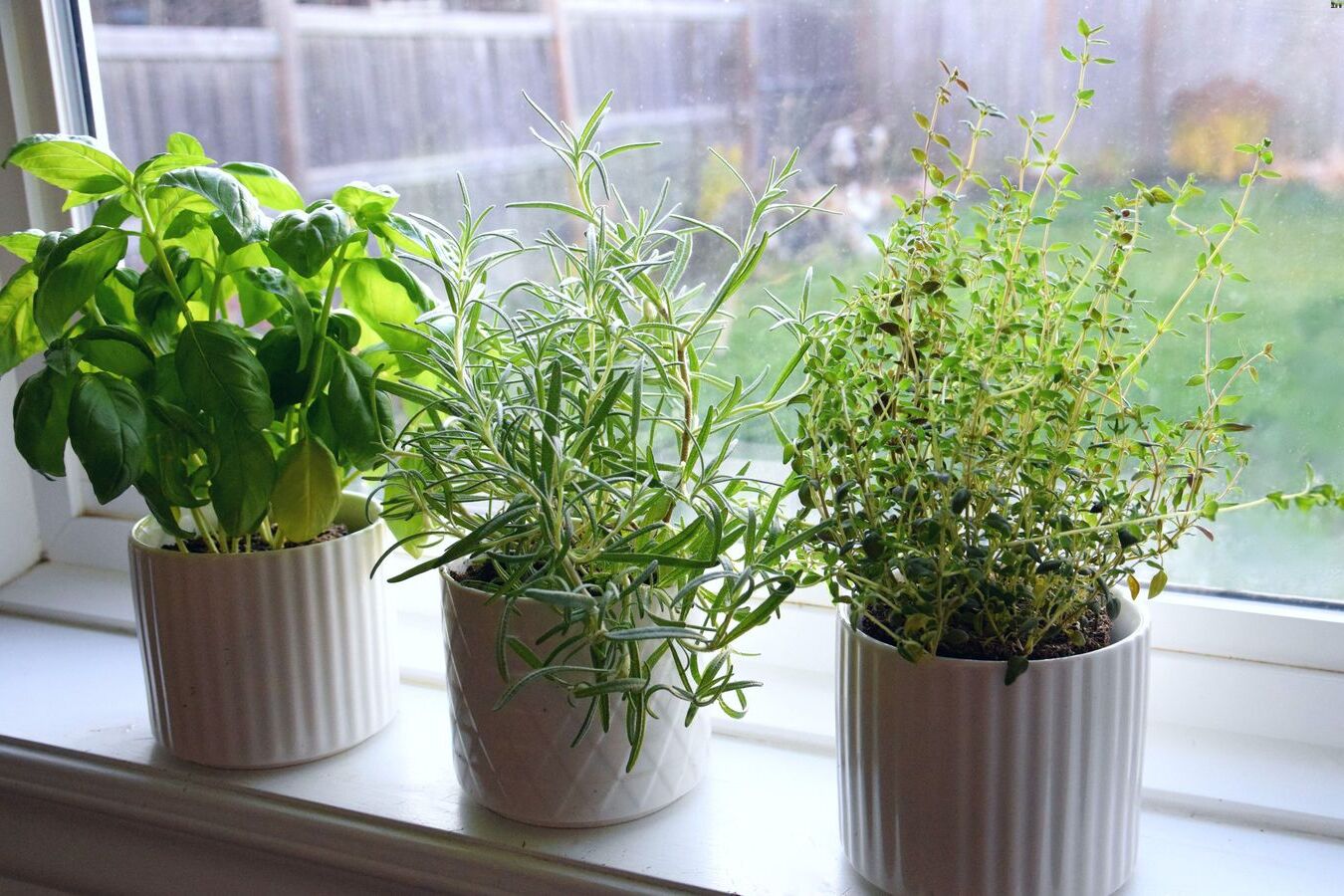

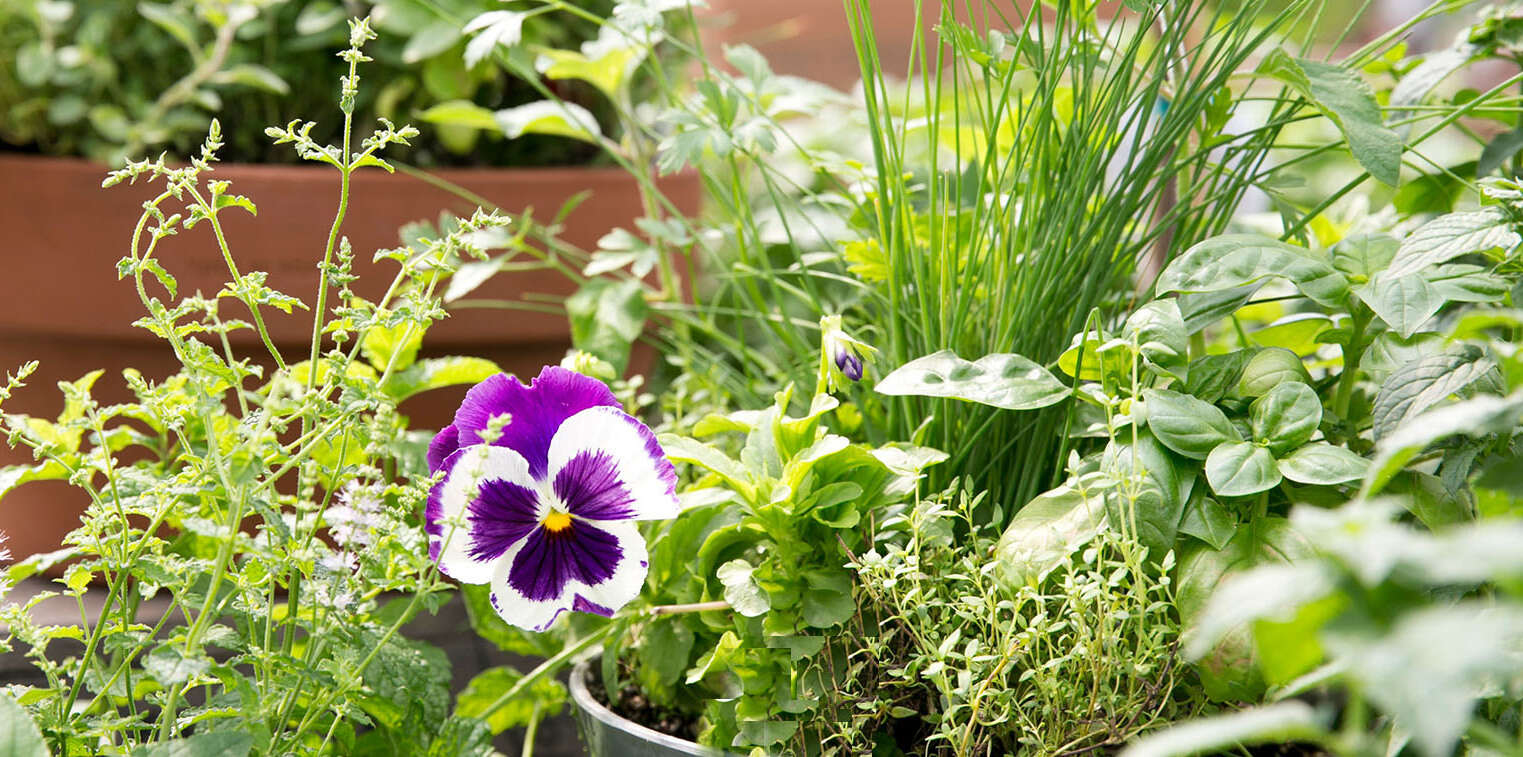
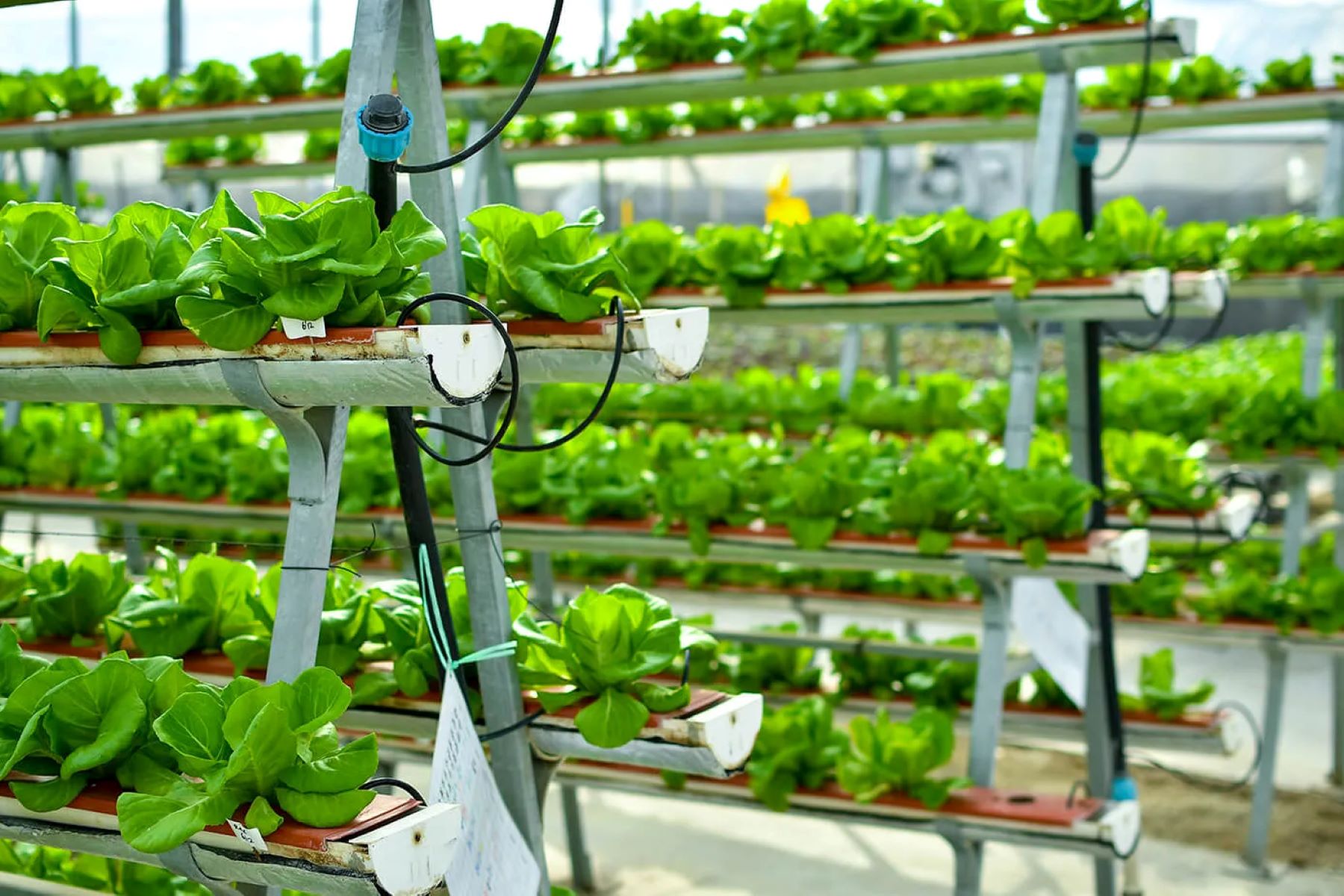
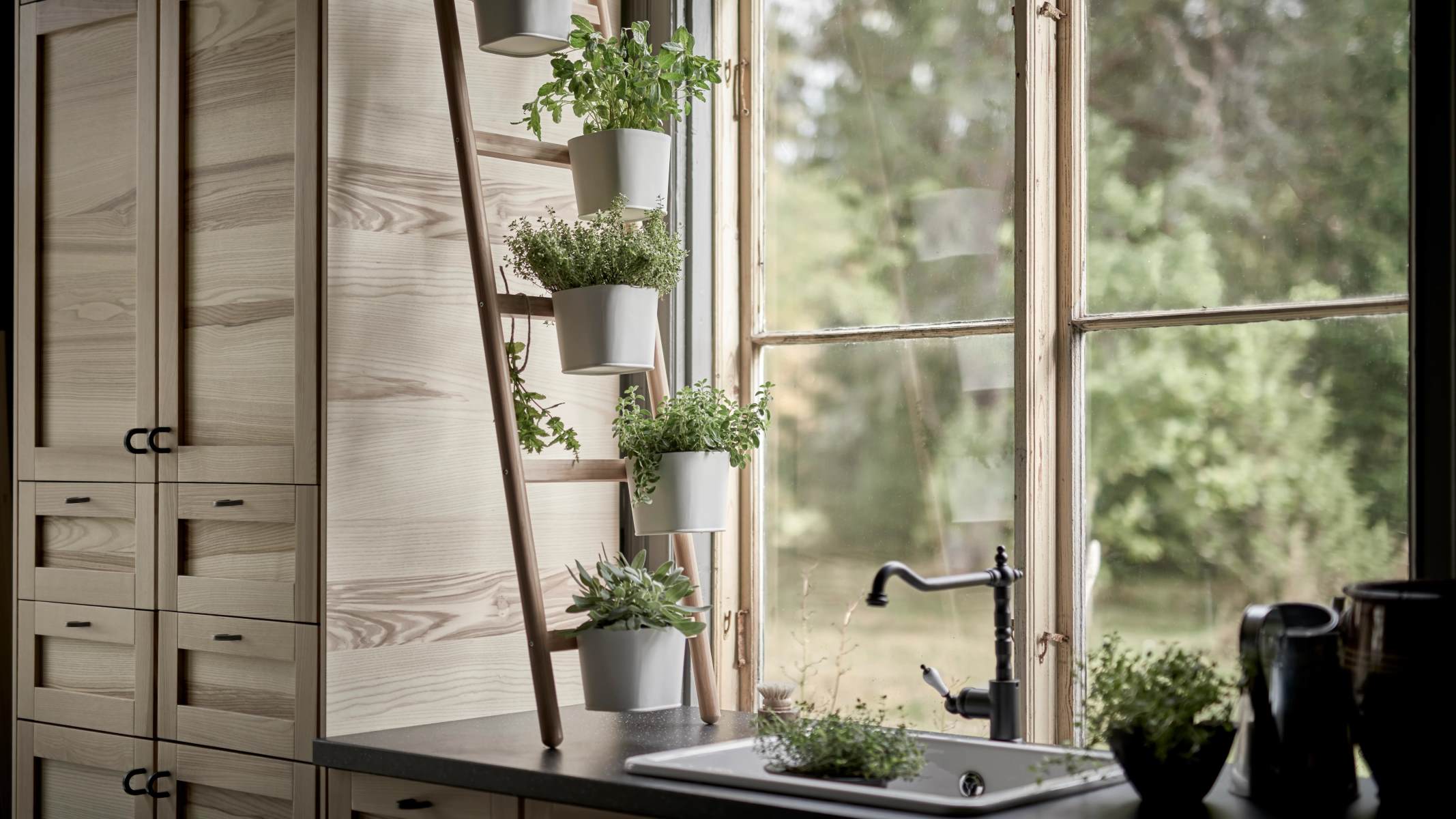
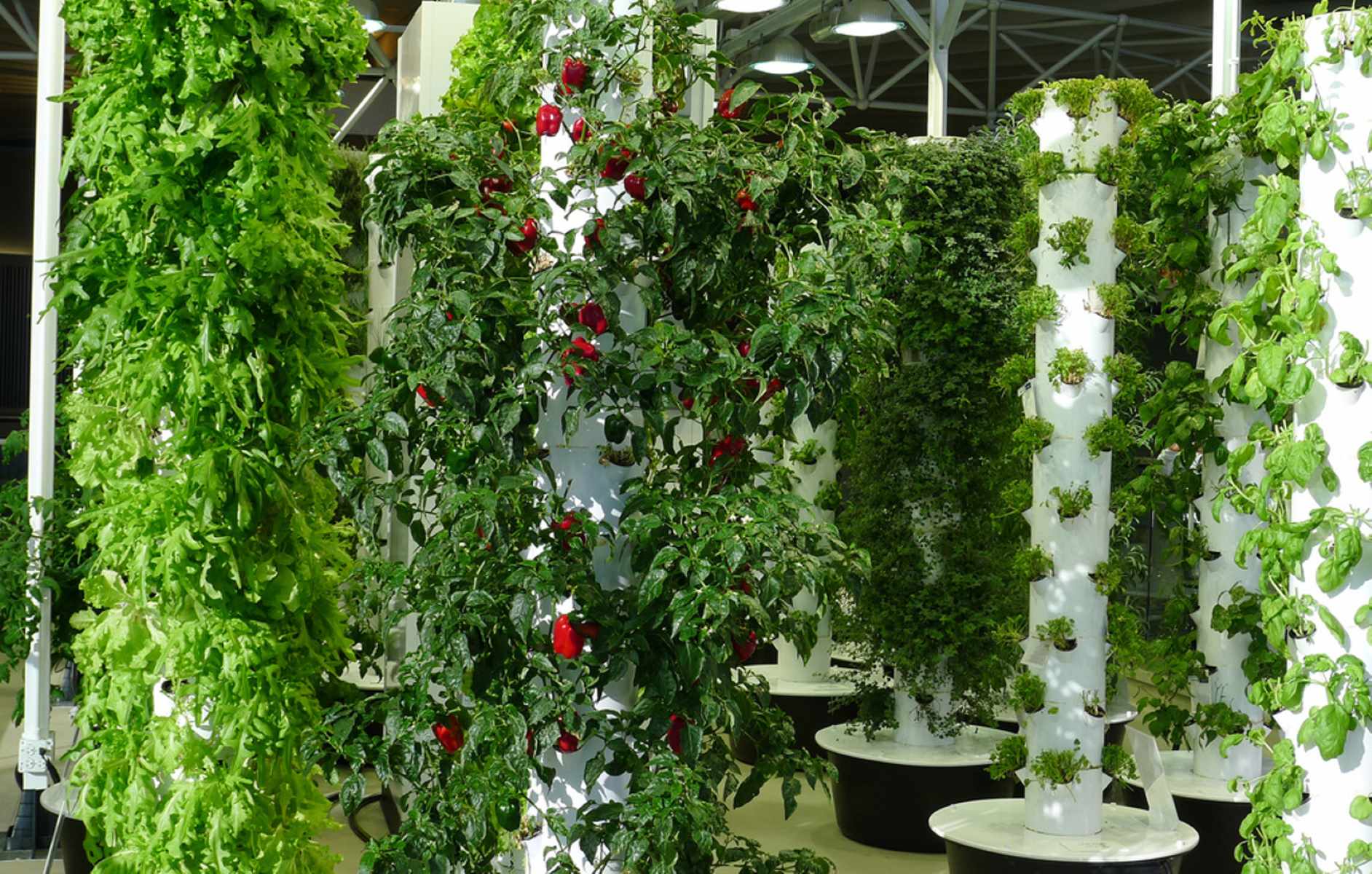
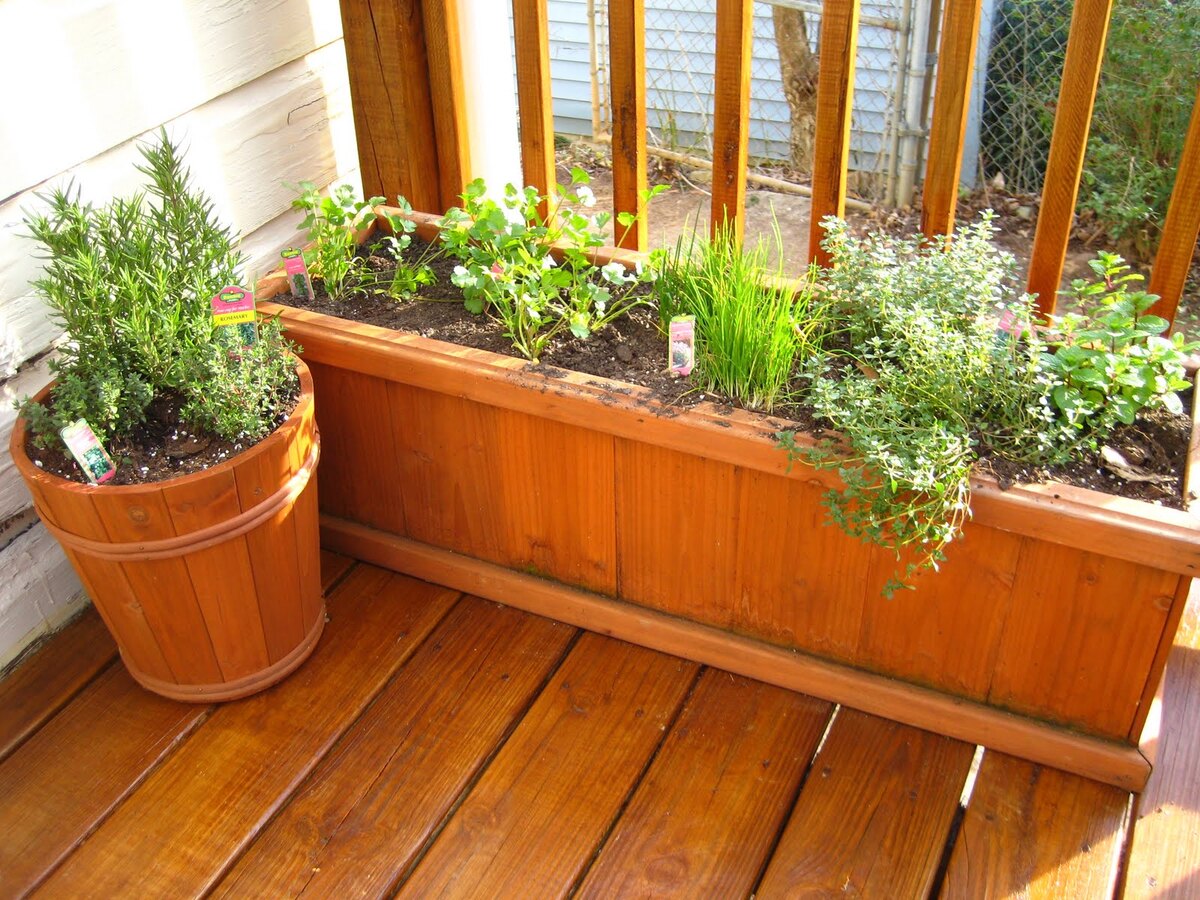

0 thoughts on “What Herbs To Grow In A Vertical Garden”